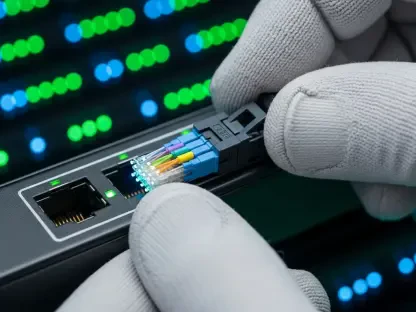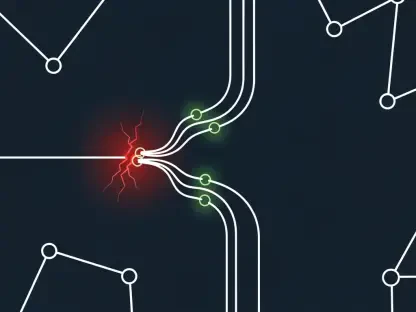I’m thrilled to sit down with Vladislav Zaimov, a seasoned telecommunications specialist whose extensive background in enterprise telecommunications and risk management of vulnerable networks offers a unique perspective on the digital landscape. With years of expertise, Vladislav has witnessed firsthand the evolution of connectivity technologies and their impact on economies and societies. Today, we’ll explore the rapid digital transformation across OECD countries from 2019 to 2024, diving into the dominance of fiber broadband, the transformative power of 5G, the push for affordability and access, and the innovative solutions bridging connectivity gaps. Let’s get started.
How would you describe the pace of digital transformation in OECD countries over the past five years, from 2019 to 2024?
The pace has been nothing short of remarkable. In just five years, we’ve seen a seismic shift in how digital infrastructure underpins economies across OECD countries. Fiber broadband penetration jumped from 28% to 47%, and 5G adoption reached 37% of mobile subscriptions. This rapid progress reflects a collective push toward high-capacity, reliable connectivity, driven by both technological advancements and societal needs. It’s not just about numbers—it’s about how digital tools have become essential to daily life and business operations in a very short time.
What do you believe were the key drivers behind this accelerated shift toward digital connectivity during this period?
Several factors played a role, but I’d highlight the convergence of policy, investment, and demand. Governments and private sectors in OECD countries prioritized digital infrastructure as a cornerstone of economic growth, pouring resources into fiber and 5G networks. At the same time, consumer and business demand for faster, more reliable internet skyrocketed, especially as remote work, online education, and digital services became mainstream. This created a feedback loop—more investment led to better access, which in turn fueled greater demand.
How did the COVID-19 pandemic shape the demand for robust broadband and digital infrastructure?
The pandemic was a game-changer. Overnight, digital connectivity went from a convenience to a lifeline. With millions working from home, attending virtual classes, or relying on online services, the strain on existing networks became evident. This urgency pushed both public and private sectors to accelerate broadband upgrades, especially in fiber and mobile networks. It also highlighted disparities in access, prompting a renewed focus on closing digital divides, which we’re still addressing today.
Fiber broadband now makes up nearly half of fixed subscriptions in OECD countries. Why is fiber such a vital technology for modern digital economies?
Fiber is the gold standard for fixed broadband because of its unmatched speed, reliability, and capacity. Unlike older technologies like DSL or cable, fiber can handle massive data loads with minimal latency, which is crucial for everything from cloud computing to streaming high-definition content. It’s also future-proof—fiber networks can support emerging technologies like smart cities or advanced IoT applications. For digital economies, it’s the foundation that enables innovation and scalability.
What lessons can we learn from countries like Korea, Iceland, and Spain, where fiber penetration exceeds 80%?
These countries show the power of strategic planning and collaboration. Korea, for instance, has long prioritized national broadband policies, with heavy government support and public-private partnerships driving fiber rollout. Iceland and Spain leveraged competitive markets and targeted investments in rural areas to ensure widespread access. The lesson here is that high penetration doesn’t happen by accident—it requires a mix of policy commitment, funding, and a clear vision for universal connectivity.
With 5G now accounting for 37% of mobile broadband subscriptions, how is this technology changing the way people and businesses connect?
5G is a revolution in mobile connectivity. Its ultra-fast speeds and low latency are enabling use cases that were previously unimaginable, like real-time remote surgeries, autonomous vehicles, and massive IoT deployments. For businesses, it means seamless cloud integration and enhanced productivity through mobile solutions. For individuals, it’s about richer experiences—think augmented reality or instant data access on the go. 5G isn’t just faster; it’s reshaping entire industries.
Mobile data usage has more than doubled to 15 GB per subscription per month. What’s fueling this dramatic increase?
It’s largely due to how we consume content and interact with technology. Streaming high-definition video, gaming, and using data-heavy apps are now the norm. Add to that the rise of remote work and virtual collaboration tools, which rely on constant connectivity, and you’ve got a perfect storm of data demand. Plus, as networks improve with 5G and fiber, people are more inclined to use data-intensive services without worrying about speed or reliability.
Broadband prices have dropped significantly in recent years. How has this affordability changed access to digital services across OECD countries?
Lower prices—34% down for mobile and 20% for fixed broadband—have been a huge win for accessibility. More households and small businesses can now afford high-quality internet, which means greater participation in the digital economy. This affordability has democratized access to education, healthcare, and job opportunities online, especially in markets where cost was once a barrier. It’s a critical step toward inclusivity, though gaps still remain in some areas.
Are there still challenges to ensuring affordable connectivity in certain OECD countries, and if so, what are they?
Absolutely, challenges persist. In some countries, rural and remote areas still face higher costs due to the expense of infrastructure deployment. Income inequality also plays a role—even with lower prices, some households struggle to afford subscriptions or devices. Additionally, regulatory hurdles or lack of competition in certain markets can keep prices higher than they should be. Addressing these issues requires targeted subsidies, innovative solutions like satellite broadband, and policies that encourage market competition.
What’s your forecast for the future of digital connectivity in OECD countries over the next decade?
I’m optimistic but cautious. I expect fiber and 5G to continue dominating, with near-universal coverage in many OECD countries within the next ten years. We’ll likely see even greater integration of IoT and smart technologies, driving demand for resilient, high-capacity networks. However, the focus will shift from just access to quality and security—ensuring networks are robust against cyber threats and disruptions. Affordability will remain a priority, and I believe emerging tech like low-earth-orbit satellite systems will play a bigger role in closing the last-mile gaps. It’s an exciting time, but it’ll require sustained effort and innovation.









